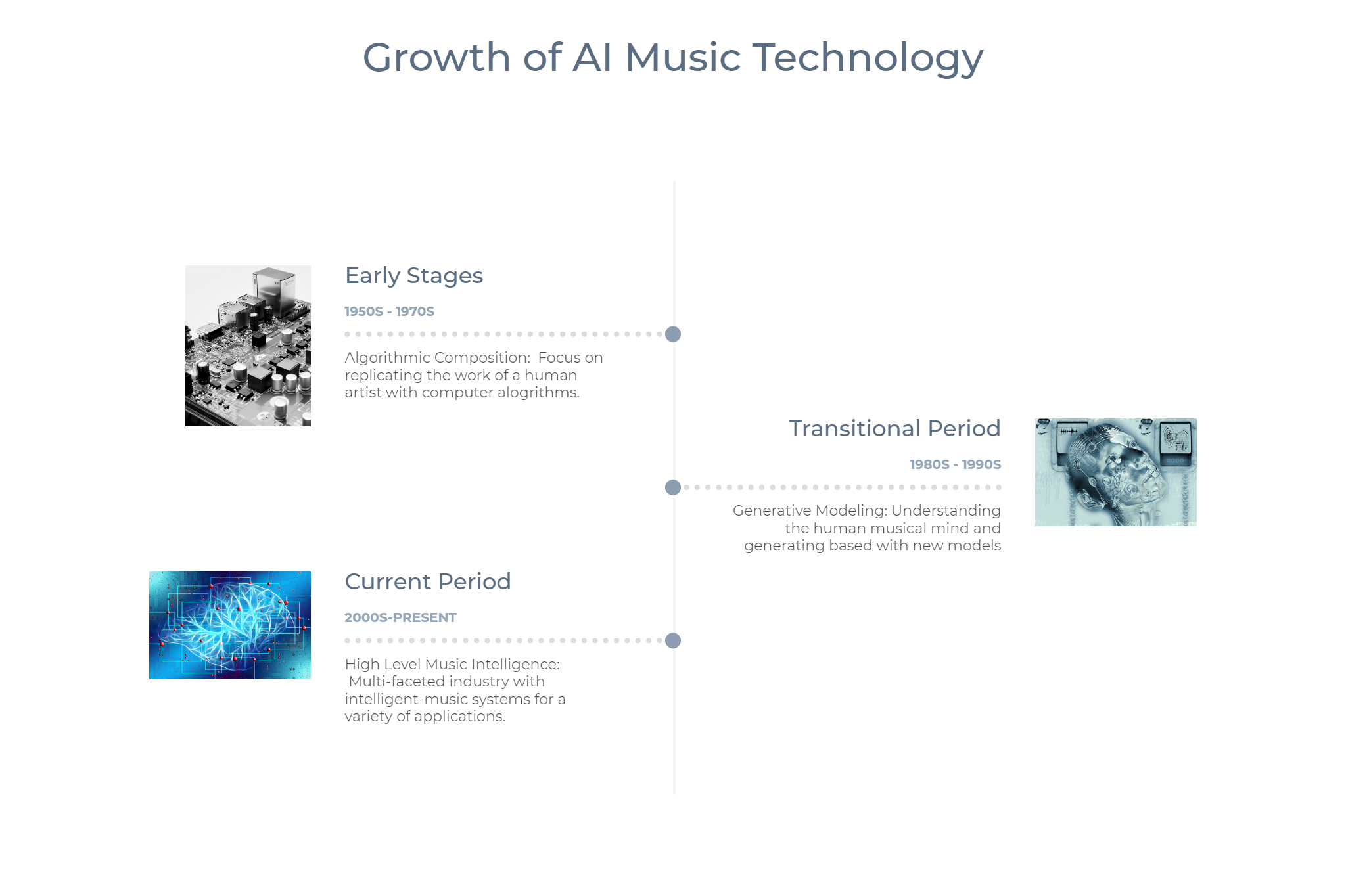The Symphony of AI: Exploring the Landscape of AI-Based Music Composition
The Symphony of AI: Exploring the Landscape of AI-Based Music Composition
Introduction: In the realm of music, creativity has long been regarded as a distinctly human endeavor, a process driven by emotion, intuition, and cultural context. However, with the advent of artificial intelligence (AI), the boundaries of creativity are expanding, challenging our traditional notions of what it means to compose music. AI-based music composition, leveraging the power of machine learning and neural networks, is revolutionizing the way we create and experience music. This essay explores the landscape of AI-based music composition, delving into its techniques, implications, and the evolving relationship between humans and machines in the realm of music.
The Evolution of AI-Based Music Composition:
AI-based music composition is rooted in the intersection of computer science, mathematics, and music theory. Early experiments in algorithmic composition date back to the mid-20th century, with pioneers such as Iannis Xenakis and David Cope exploring mathematical models and rule-based systems to generate musical patterns. However, it is the recent advancements in machine learning, particularly deep learning, that have propelled AI-based music composition to new heights.
 Techniques and Approaches:
Techniques and Approaches:
At the heart of AI-based music composition are neural networks, computational models inspired by the structure and function of the human brain. These networks are trained on vast datasets of musical compositions, learning the intricate patterns and relationships that define different musical styles and genres. One common approach is the use of recurrent neural networks (RNNs) or variants like long short-term memory (LSTM) networks, which excel at capturing temporal dependencies in sequential data like music. Generative adversarial networks (GANs) have also emerged as powerful tools for creating original music by pitting two neural networks against each other: one generates music, while the other evaluates its authenticity, leading to a continuous cycle of improvement.
Implications and Challenges: The rise of AI-based music composition raises profound questions about the nature of creativity and authorship in the digital age. While AI systems can produce music that is indistinguishable from human compositions, the question of who owns the creative output remains contentious. Additionally, there are concerns about the potential homogenization of musical styles, as AI algorithms tend to prioritize patterns and trends present in training data. Moreover, ethical considerations regarding the use of AI in music, such as cultural appropriation and bias, warrant careful examination.

The Human-Machine Collaboration:
Despite these challenges, AI-based music composition also presents exciting opportunities for collaboration and exploration. Many composers and musicians view AI as a creative tool, augmenting their own artistic process rather than replacing it. AI systems can assist composers in generating ideas, exploring new harmonic progressions, or even serving as virtual collaborators in the creative process. Furthermore, AI-based music composition democratizes access to music creation, empowering individuals with limited musical training to express themselves creatively.

Conclusion:
AI-based music composition represents a paradigm shift in the way we conceive of music creation, blurring the lines between human and machine creativity. While it poses challenges and uncertainties, it also opens up new frontiers of artistic expression and collaboration. As we navigate this evolving landscape, it is essential to approach AI-based music composition with a critical yet open-minded perspective, recognizing both its potential and its limitations in reshaping the future of music.
Through the symphony of AI, we embark on a journey of exploration and discovery, where human ingenuity and machine intelligence converge to create harmonies that resonate across time and space.
Compiled by: Pratiksha Bisht
Comments
Post a Comment